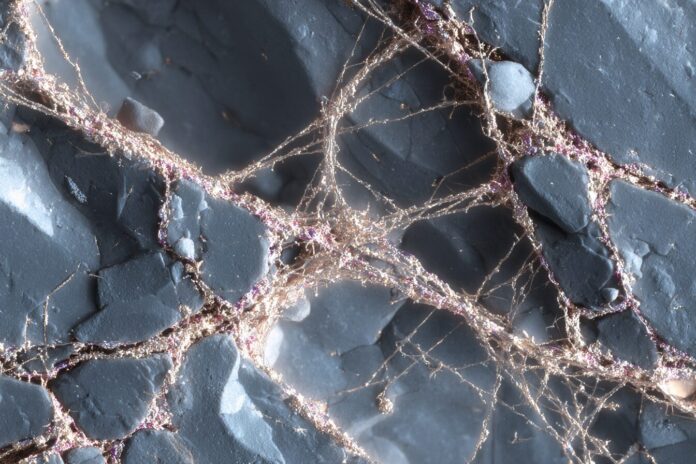Breaking the Limits of Material Science
Science has always pushed the boundaries of what’s possible in our physical world. Most importantly, material science continually shapes how we travel, build, and manufacture everyday objects. Every so often, a discovery comes along that redefines these boundaries, challenging long-held assumptions about material durability.
Because engineers and researchers seek innovative ways to enhance structural safety, the latest breakthrough in self-healing metal has garnered significant attention. This discovery, which demonstrates that metals can repair themselves at the microscopic level, is poised to revolutionize industries by potentially reducing maintenance costs and extending the lifespan of critical infrastructure.
Unveiling the Phenomenon: How Did Scientists Witness Self-Healing Metal?
Researchers at Sandia National Laboratories and Texas A&M University conducted a meticulous experiment to investigate the growth of microscopic cracks under repeated stress. They employed nanocrystalline samples of platinum and copper – materials known for their robustness – subjecting them to cyclic stretching at hundreds of times per second. Most importantly, the experiment successfully mimicked the conditions metals face in real-world applications.
Because the experiment revealed the unexpected, scientists watched in real time as a crack emerged and, after approximately 40 minutes, began to shrink instead of spreading. This self-healing process, noted as an extraordinary occurrence, has fundamentally challenged conventional theories regarding metal fatigue. For further details on this transformation, refer to the in-depth discussion provided by SciTechDaily.
The Cold Welding Process: Unlocking Nature’s Repair Mechanism
This groundbreaking healing effect is driven by a process called “cold welding,” where two clean metal surfaces re-establish atomic bonds without the need for external heat. In other words, the metal essentially repairs itself through spontaneous molecular adhesion. Because the experiment provided the first direct observation of this phenomenon, it has significant implications in the field of material science.
Besides that, the implications extend into practical realms where traditional repair methods are expensive or difficult to implement. For example, the observed self-healing behavior aligns with theories detailed in the Physical Review, providing a solid theoretical framework that supports continued research in this area. Therefore, understanding cold welding is essential for embracing future applications in advanced materials.
Why This Discovery is Revolutionizing Engineering
Metal fatigue is a slow and often undetected process that eventually leads to the failure of structural components. Notably, bridges, aircraft, and automotive engines all depend on metal integrity, which gradually diminishes with use. When microscopic cracks merge and grow, the safety and reliability of these structures are jeopardized.
Because this experiment demonstrates the potential for metals to autonomously repair these tiny flaws, there is newfound optimism in the engineering community regarding safer designs. Most importantly, the self-healing property could lead to longer-lasting infrastructure, translating into significant cost savings over time. Researchers at Texas A&M University have provided further insights into these benefits, as seen in their comprehensive report [Texas A&M University].
From Laboratory Discovery to Real-World Applications
The observed self-healing process was demonstrated under controlled laboratory conditions using minute samples. However, scaling this to larger structures is a challenge that researchers are now poised to tackle. Because the technology is still in its infancy, efforts are underway to replicate the effect in different alloys and under various environmental conditions.
Moreover, as ongoing studies advance our understanding of self-healing mechanisms, there is hope that this process could soon be incorporated into everyday materials. For those interested in further exploration, recent coverage by UNILAD Tech provides insightful commentary on challenges and future prospects.
The Road Ahead: Towards Self-Healing Infrastructure
Looking to the future, the advent of self-healing metal heralds a new era for engineering. Because structures built with self-repairing materials could automatically mitigate minor damages, they would require less frequent maintenance and be more resilient in the long term. Besides that, such innovations are not only technologically exciting but could also lead to fewer catastrophic failures.
Most importantly, the integration of self-healing metals into everyday infrastructure—such as bridges, vehicles, and aerospace components—could redefine safety standards and promote sustainable development. Insights from ASM International further illuminate the path toward integrating these advanced materials into future designs.
“Scientists have, for the first time, observed metal spontaneously healing its microscopic cracks, upending traditional material theories and opening the door for revolutionary applications in infrastructure and safety.”
Conclusion: From Science Fiction to Everyday Reality
Until recently, the idea that a metal could heal itself was relegated to the realms of science fiction. However, because experimental observations have now proven the possibility, the scientific community is eager to explore practical applications that could transform everyday life. This breakthrough invites us to reimagine not only the design and maintenance of our transportation and infrastructure systems but also the future of manufacturing and consumer products.
Therefore, as researchers continue to refine these self-healing properties, we stand at the cusp of an era where engineered materials adapt and evolve over time. With further research, this innovation could soon set new benchmarks for safety and durability. To keep updated with the latest advancements, readers are encouraged to explore ongoing studies and analyses as published by leading scientific journals and technology news outlets.
References:
– SciTechDaily
– Texas A&M University
– Physical Review
– UNILAD Tech
– ASM International



